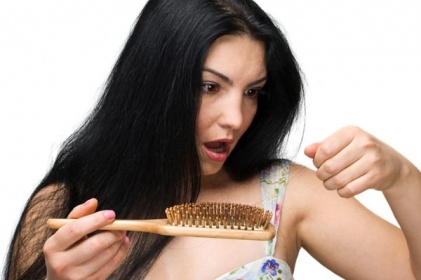
Giving birth is one of the most miraculous and wondrous moments that a woman could havein her lifetime. Having to see your baby whom you had conceived for 9 months (or less) and to know that he is alive and healthy is such a delight nothing could match. But despite these highs, one of the common lows and stresses a new mum faces after pregnancy is, well, the infamous hair loss. Approximately about 40 to 50% of women is affected by hair loss, which is also known as telogen effluvium, or the excessive shedding of hair that occurs one to five months following pregnancy.
But fret not, this condition is not serious enough to cause bald spots, and should begin to diminish within 3-4 months after delivery. Approximately 90% of your hair is growing at any one time, while the other 10% enter a resting phase. Every two to three months the resting hair falls out and allows new hair to grow in its place. Hair loss that is connected to pregnancy usually occurs after delivery. During pregnancy, an increased number of hairs go into the resting phase, which is part of the normal hair loss cycle.
The most common period of hair loss occurs approximately three months after delivery. The rise in hormones during pregnancy keeps you from losing your hair. After delivery, the hormones return to normal levels, which allows the hair to fall out and return to the normal cycle. The normal hair loss that was delayed during pregnancy may fall out all at once.
Up to 60% of your hair that is in the growth state may enter into the telogen resting state. The hair loss usually peaks 3-4 months after delivery as your hair follicles rejuvenate themselves. As noted before, this hair loss is temporary and hair loss returns to normal within six to twelve months.
Hair loss can be triggered by anything that involves a change in the estrogen hormone balance in your system. Hair loss may result from any one or more of the following:
1. Discontinuation of birth control pills or any other hormonal type of birth control method
2. Miscarriage or stillbirth
3. Abortion
4. A hormonal imbalance
There are a number of things that you might do to have healthier hair and/or reduce hair loss during pregnancy and after delivery:
1. Consult with your health care provider to ensure a proper balance of hormones
2. Avoid pigtails, cornrows, hair weaves, braids and tight hair rollers which can pull and stress your hair
3. Eat a diet high in fruits and vegetables, which contain flavonoids and antioxidants that may provide protection for the hair follicles and encourage hair growth
4. Use shampoos and conditioners that contain biotin and silica
5. Hair is fragile when it is wet, so be gentle; avoid fine tooth combs
6. If you need to use blow dryers and other heated hair instruments, try to use the cool setting
7. Supplement your diet with the following nutrients:
- Vitamin B complex (Category A)
- Biotin (Possibly safe; orally and appropriately)
- Vitamin C (Category A)
- Vitamin E (Likely safe if amount does not exceed the RDA; possibly safe if it does)
- Zinc (Likely safe when used orally and appropriately; likely unsafe when used orally in high doses
8. Breastfeed your baby. Breastfeeding keeps your body producing more hormones than it does when you aren’t breastfeeding.
9. Realize that “this, too, shall pass,” and if does not cease within six to twelve months, go see a doctor.
For mums, having the best crowning glory may no longer be one of your primary concerns, but then again, losing your hair is not an attractive thought. We hope that the above steps will help alleviate and bring back your confidence again.
Source: Pregnancy and Hair Loss
“MummySG, where every Mum is awesome.”






